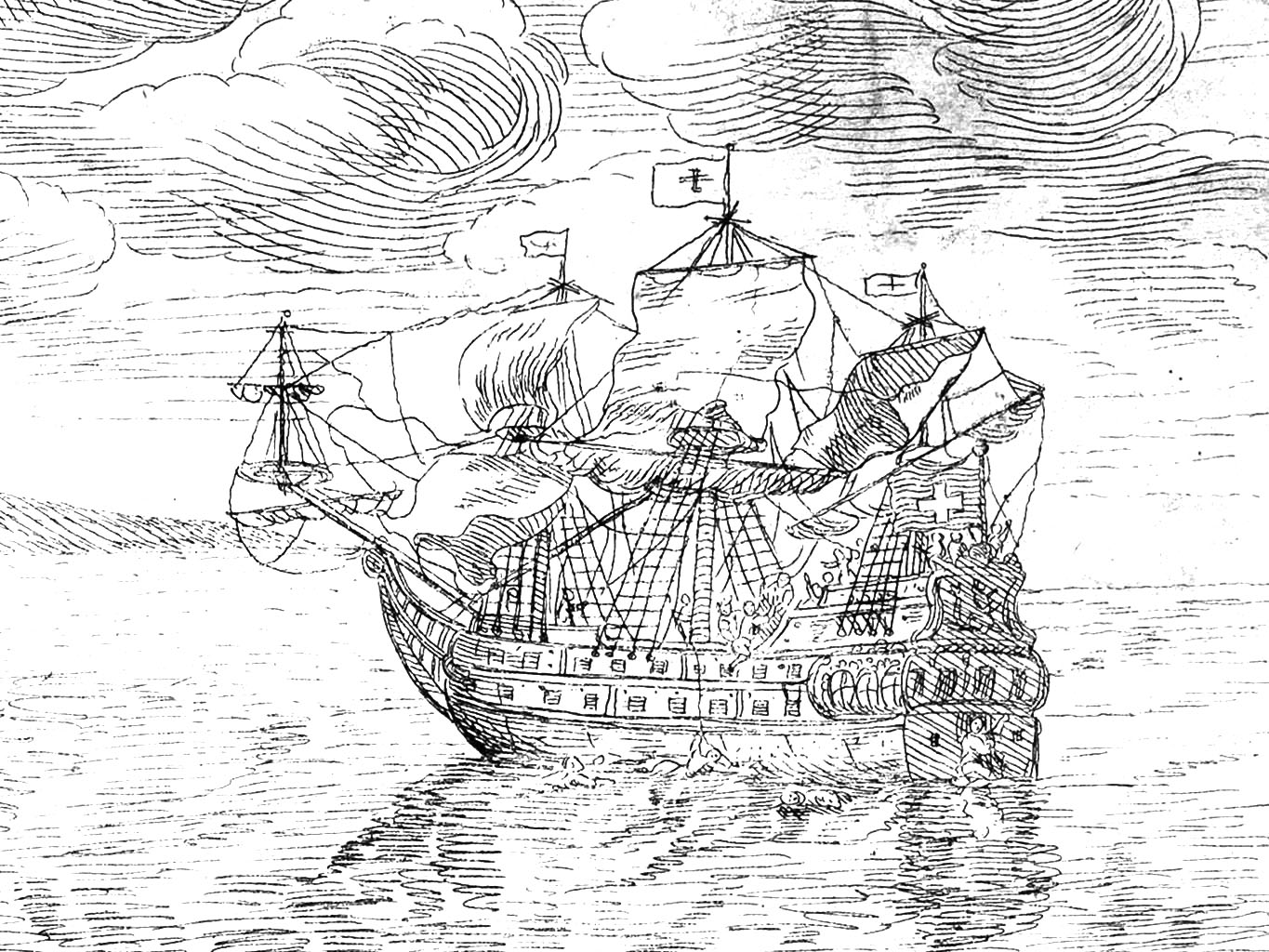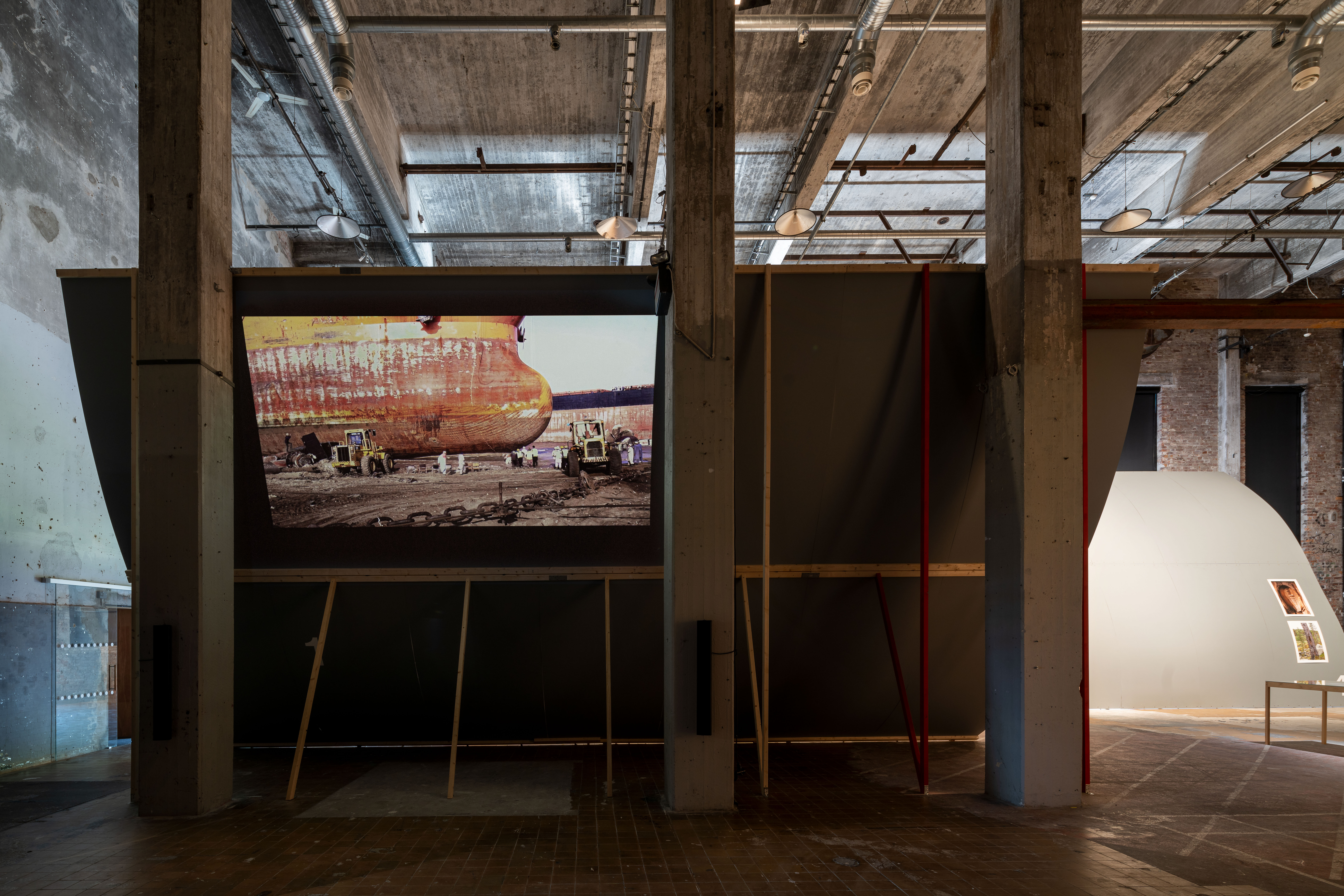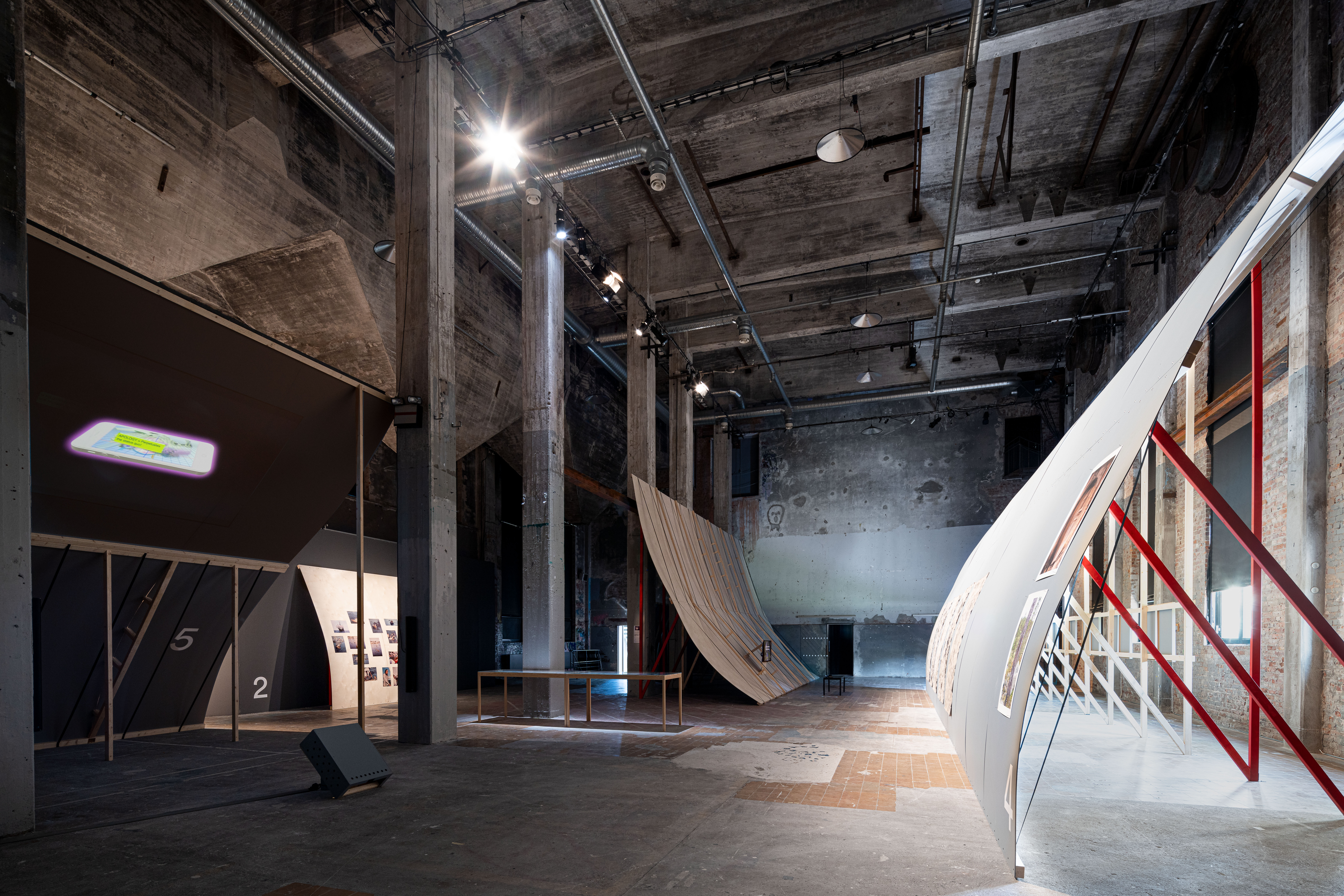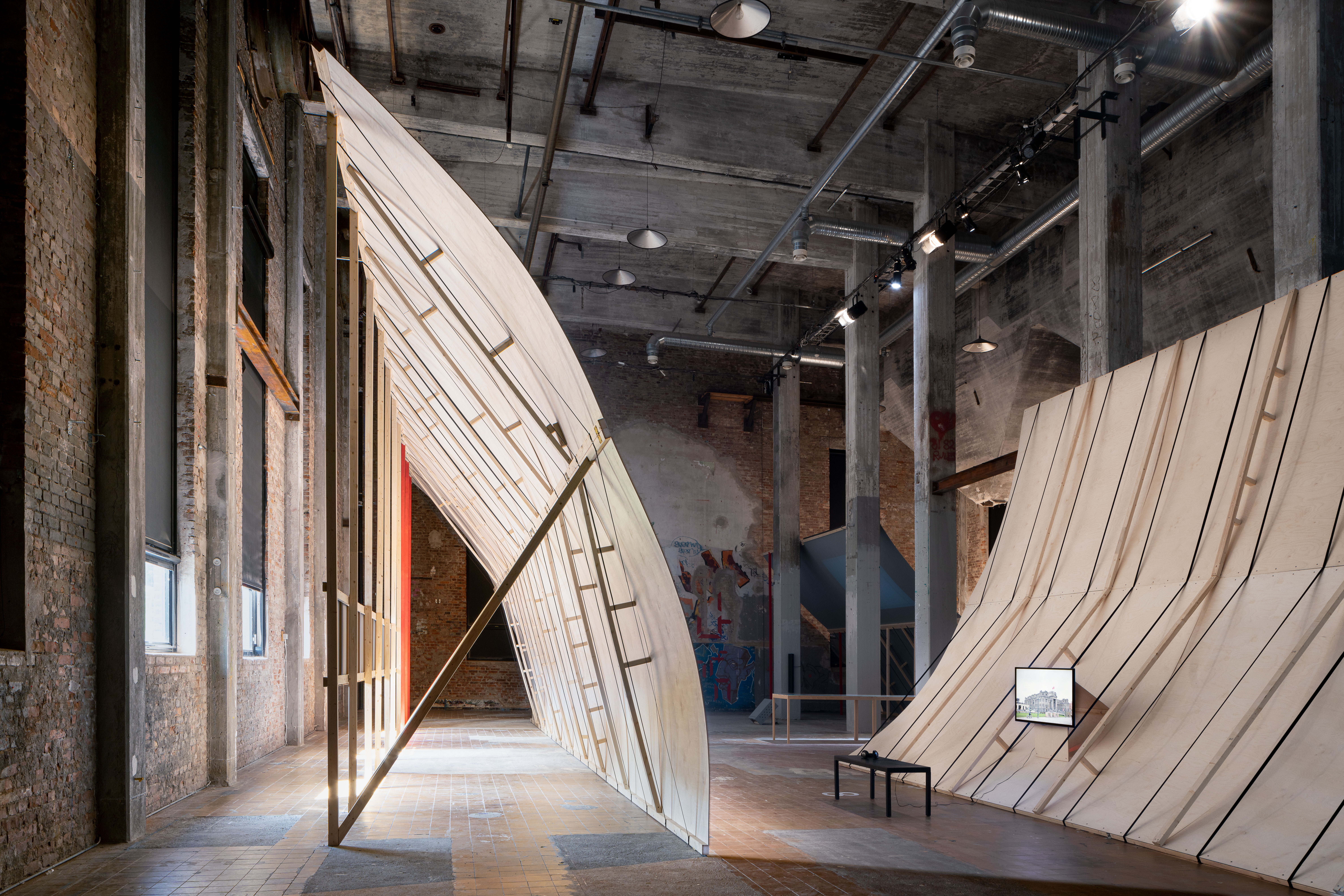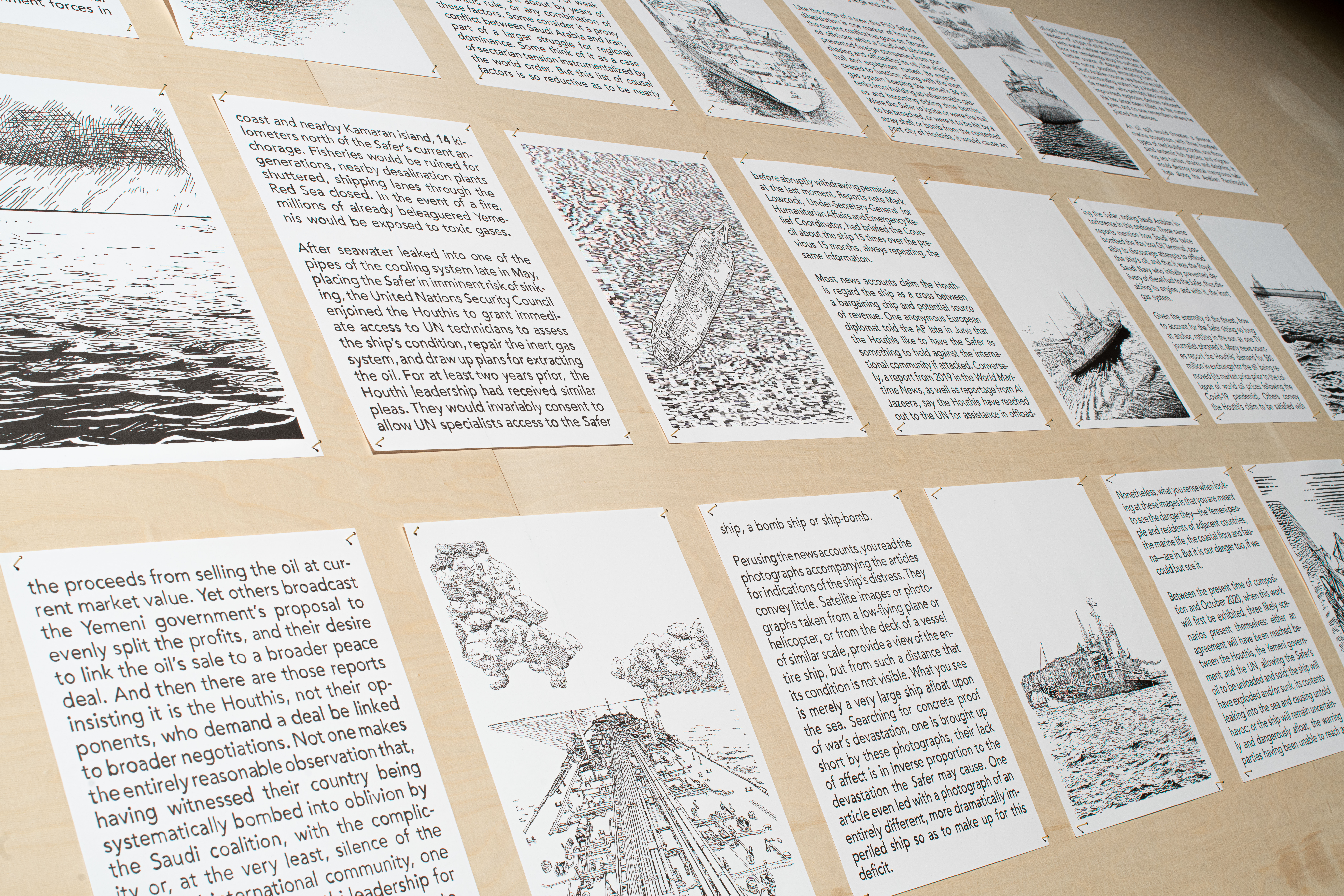The Ship Havmanden as Exhibition Architecture
Gothenburg is the largest port in Scandinavia since hundreds of years and the history of the city can be told as a story of ships. One of the more famous is the East India trader Götheborg, shipwrecked outside the city in 1745 upon returning from a trip to China, and found by marine archaeologists in 1984. The find led to a full-scale replica of the vessel being built and sailed to East Asia with the purpose of spreading knowledge about the city abroad.
Not so well known is that the marine archaeologists also found another ship: the Danish West Indian frigate Havmanden that had been on its way to the Caribbean colony of St Thomas before experiencing mutiny on board and sinking outside Gothenburg in 1683. This ship was never dug up, publicly displayed or replicated.
Exhibition architects Kooperative für Darstellungspolitik have been commissioned by the biennial to stage a metaphorical replica of Havmanden to be used as the physical structure of the exhibition. The gesture mirrors the intention of the earlier replica of Götheborg to connect the city’s past to its future, but with one difference: at Röda Sten Konsthall the metaphorical ship will be fragmented, like the actual ship’s ruin.
The replica represents how the past continues to frame the present, but also how the ruins of history can be repurposed. Transforming over the duration of the biennial, more artworks will be added and the ghost ship will continue to break apart, the gaps between the pieces alluding to the untold or forgotten stories of the city.
Presentation of exhibition architecture proposal by Kooperative für Darstellungspolitik with support of Goethe-Institut Schweden

